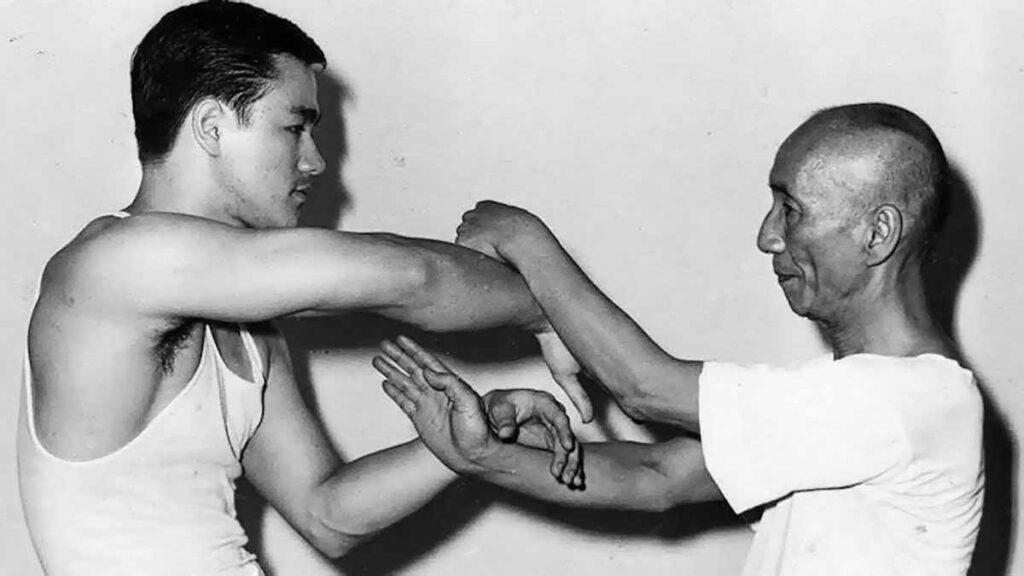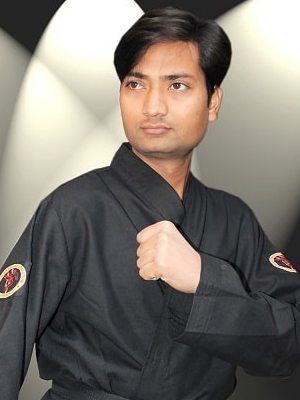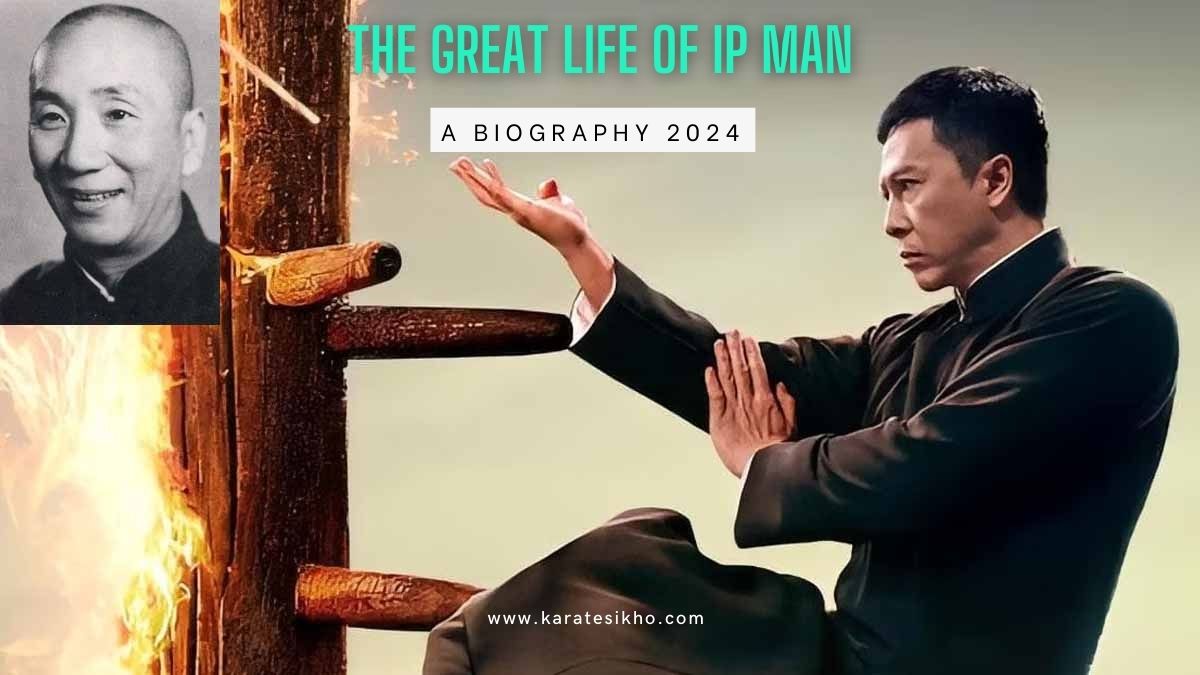Discover the captivating journey of Ip Man, martial arts legend and mentor to Bruce Lee, in “Unraveling the Life of Ip Man – A Biography.” Delve into the life of this iconic figure, from his humble beginnings to becoming a renowned master of Wing Chun. Explore his struggles, triumphs, and enduring legacy that continues to inspire generations worldwide.
This article The Life of Ip Man focuses on the martial artist Ip Man. For the film series based on his life, refer to Ip Man (film series). In this Chinese naming convention, the family name comes first, which is Ip or Yip. Interested in uncovering the authentic tale of Ip Man? Delve into the genuine story of Ip Man, also known as Yip Man!
- The Life of Ip Man?
- Is Ip Man a real story?
- What in the Ip Man movie was true?
- Ip Man was a real person (also known as Yip Man)
- Ip Man was a real person (also known as Yip Man)
- Ip Man is credited with being the first person to publicly teach Wing Chun.
- Ip Man was a real person (also known as Yip Man)
- Ip Man is credited with being the first person to publicly teach Wing Chun.
- Ip Man was Bruce Lee’s sifu (Kung Fu teacher)
- What’s false in the Ip Man movie?
- Ip Man never fought 10 Japanese Karate black belts
- Ip Man never fought a Japanese general
- Ip Man never was shot
- and much more!
The Life of Ip Man – A Biography
The reality is, the Ip Man movies featuring Donnie Yen were only loosely inspired by true events, and even that’s a stretch! The genuine story of Ip Man differs significantly. To be frank, nearly everything portrayed about Ip Man in the movies is fabricated.
Discover the life of the martial arts legend whose influence has reached millions of practitioners worldwide, including renowned figures like the late Bruce Lee. This article primarily delves into the historical and biographical aspects of Ip Man’s life.
“The Life of Ip Man,” Yip Man, sometimes referred to as Yip Man, was born on October 1, 1893, and passed away on December 2, 1972. He was the third child of Ip (Yip) Oi Dor and Ng Shui, born into a wealthy family in Foshan, Guangdong province, China.
Enjoying a privileged upbringing, he received an exceptional education. His older brother was Ip Kai Gak, while his older sister was Ip Wan Mei, and his younger sister was Ip Wan Hum. In Chinese culture, the family name, Ip, is stated first.
Ip Kai Man was among the pioneering martial arts instructors, or Sifu, to publicly teach Wing Chun Kung Fu. He mentored numerous students who later emerged as esteemed martial arts instructors, among them Bruce Lee. At the age of thirteen, Ip Man commenced his Wing Chun training under Chan Wah-shun.
Instructor of Ip Man
“The Life of Ip Man,” Ip Man had several instructors in Wing Chun; however, Chan Wah-shun is officially recognized as his instructor. Known as “Moneychanger Wah,” Chan Wah-shun owned a coin-changing stall, earning him his nickname. He developed an exceptionally strong grip from carrying heavy loads of coins daily.
His mentor, Leung Jan, owned a medical clinic adjacent to his coin-changing business. Chan Wah-shun commenced his Wing Chun training at the age of 25, eventually becoming one of Leung Jan’s most esteemed pupils. He earned the moniker “Bull” for his numerous victories in challenge fights.
Due to his sifu’s advanced age, Ip Man absorbed many skills and techniques from Ng Chung-sok, Chan Wah-shun’s second eldest disciple. Unfortunately, three years into Ip Man’s training, Chan Wah-shun passed away, entrusting Ng with the responsibility to continue training Ip as per his final wish.
“The Life of Ip Man,” At the age of 15, Ip Man relocated to Hong Kong with assistance from Leung Fut Ting, a relative. By sixteen, he enrolled at St. Stephen’s College in Hong Kong, a secondary school catering to affluent families and expatriates. According to Ip Man’s sons, while at St. Stephen’s, he intervened in a situation where a foreign police officer was mistreating a woman.
Allegedly, Ip Man used his martial arts skills to subdue the officer, prompting him and a classmate to flee to school. This classmate informed an elderly resident of their apartment complex, who invited Ip Man to demonstrate his martial art. Despite Ip Man’s initial confidence, he was swiftly defeated in a Chi Sau encounter. This elderly man turned out to be Leung Bik, a senior disciple of Ip Man’s master.
Following this encounter, Ip Man resumed training under Leung Bik’s guidance. Although Ip Man’s version of the story in an interview with Martial Hero Magazine omitted the altercation with the police officer, he attributed his meeting with Leung Bik to his reputation for causing trouble at school. By the age of 24, Ip Man had returned to Foshan, significantly enhancing his Wing Chun proficiency.

“The Life of Ip Man,” In Foshan, Ip Man served as a policeman. While he didn’t establish a formal Wing Chun school, he imparted his knowledge to several of his subordinates, friends, and relatives. Two of his students and friends, Kwok Fu and Lun Kai, continued the Wing Chun lineage by teaching their own students.
The transmission of Wing Chun in the Foshan and Guangdong region primarily originated from these individuals. During the Japanese Occupation, Ip Man sought refuge in Kwok Fu’s village house, returning to Foshan only after the war to resume his role as a police officer.
During his time in Foshan, Ip Man formed a friendship with Yuen Kay Shan, despite their differing Wing Chun lineages. Their bond grew strong enough for Ip Man to entrust Yuen Kay Shan with teaching his son, Ip Chun, the foundational form of the art.
“The Life of Ip Man,” In late 1949, following the victory of the Chinese Communist Party in the civil war, Ip Man, an officer affiliated with the opposing Kuomintang political party, fled to Hong Kong without his family when the Communists arrived in Foshan. In Hong Kong, Ip Man established a Wing Chun martial arts school.
Initially, business was slow as most of his students only stayed for a couple of months. He relocated his school twice, first to Hoi Tan Street in Sham Shui Po, and then to Lee Tat Street in Yau Ma Tei. Over time, some of his students honed their skills to the point where they could establish their own schools.
Certain students and descendants of Ip Man tested their abilities against other martial artists in combat. Initially, many faced defeat, but eventually, prior to Ip Man’s passing, their victories over other martial artists contributed to enhancing Ip Man’s standing as a teacher.
How Did Ip Man Die?
Ip Man passed away on December 2nd, 1972, merely seven months before Bruce Lee’s untimely demise. His death resulted from throat cancer. Prior to his passing, Ip Man arranged to have himself filmed performing his Wing Chun forms, as seen in “Ip Man Siu Nim Tao” or “Learn Wing Chun Like Ip Man.”
In the video demonstrating the wooden dummy techniques, Ip Man can be observed pausing occasionally due to weakness caused by the toll of cancer on his body. One of his sons stood by, ready to assist if needed. The moment when Ip Man requested his son to record him practicing the wooden dummy form is depicted in “Ip Man 4,” using original footage of the real Ip Man training. Additionally, as a side note, here are blueprints for constructing your own Wing Chun dummy.
Ip Man Wing Chun Forms on video
“The Life of Ip Man,” In the 1972 footage, Ip Man demonstrates the Chum Kiu form of Wing Chun. Over the course of three decades in Hong Kong, he developed a comprehensive training system for Wing Chun, which later gained global recognition and popularity.
In 1967, Ip Man and some of his students established the Hong Kong Ving Tsun Athletic Association. Approximately six weeks before his death, he requested his two sons and his student, Lau Hon Lam, to record him demonstrating the Wing Chun system he practiced.
Due to severe pain, weakness, and instability, he could only perform Sil Lim Tau, Chum Kiu, and the Dummy form. Ip Man intended to demonstrate Biu Gee, the Knife form, and the long pole, but his deteriorating health prevented him. Concerned that some students might misrepresent the system due to incomplete knowledge, Ip Man believed that recording the demonstrations was the only way to deter fraudulent practices.
Bruce Lee and Ip Man’s Real Story
“The Life of Ip Man,” One of the biggest parts of the real Ip Man story, is, of course, the relationship between himself and Bruce Lee. Ip Man was Bruce Lee’s Wing Chun teacher. And yes, Bruce Lee is considered the most famous of Ip Man’s students. Before Bruce Lee moved to the U.S.A., he learned Wing Chun under Ip Man. Because Bruce was of mixed ancestry—his father was Han Chinese, his mother was Eurasian—made it difficult for him to practice Wing Chun with Ip Man’s students, because the Chinese were typically against teaching their martial arts to any non-Asians.
Bruce lee’s keen interest in Wing Chun is said to be one of the reasons that he got to train Wing Chun privately with Ip Man. Although Bruce Lee never became a Sifu under Ip Man (roughly the equivilant of a black belt in Wing Chun), what’s also important to note is that Ip Man taught Bruce lee more than just how to fight. Ip Man was a real mentor to him.
The Legacy of the Ip Man
The legacy left by Ip Man was immense, with many lineages tracing their origins back to him in Wing Chun. Despite our extensive knowledge of Ip Man, he remains somewhat enigmatic—a mystery that several movies featuring him have attempted to unravel. The real-life narrative of Ip Man isn’t as extravagant or grandiose as portrayed in films, but that’s perfectly acceptable because his true story is compelling in its own right.
“The Life of Ip Man,” Ip Man contributed so much to Wing Chun that we continue to discover new insights from his teachings. He didn’t just impart a method of combat; he bestowed upon us a Wing Chun ethos (refer to Ip Man’s Code of Conduct). Ip Man’s legacy looms large because, without him, Wing Chun likely wouldn’t have attained its current global prominence. Whether one learns Wing Chun online or at a physical school, it remains one of the most popular forms of Kung Fu.
The increasing global popularity of Wing Chun is, without a shadow of a doubt, due in no small part because of the Ip Man movies. One of the first media portrayals of Ip Man in the movies was in the 1976 film, Bruce Lee: The Man, The Myth. It was a small role, played by Ip Chun, the eldest son of Ip Man. In a way, Ip Man has been allowed to enjoy a second life due to all of the movies portraying him, however, it is important to look at something that Donnie Yen said after the release of Ip Man 2, when he said he would no longer be playing Ip Man again:
Click here to learn about “Kickboxing to Stardom: Jean-Claude Van Damme Inspirational Life”

Martial arts trainer Karatians School India, Thank you for reading this post. This website is about martial arts, sports, and entertainment. Its goal is to make more people aware of martial arts and help them become self-reliant.

